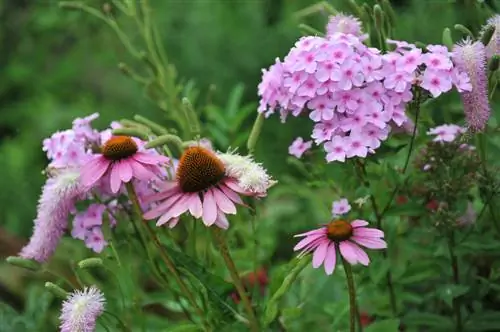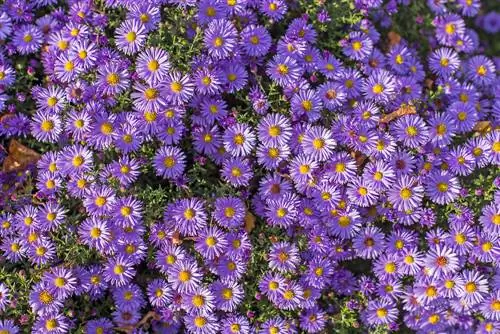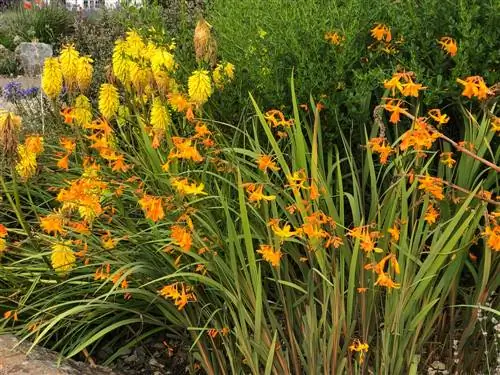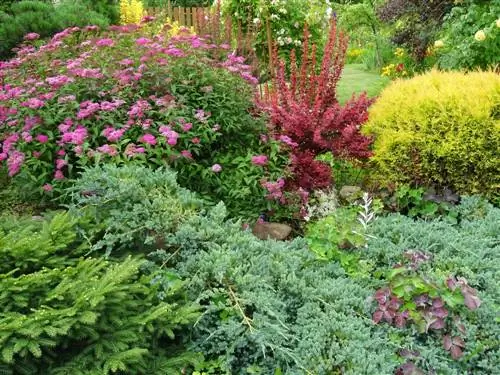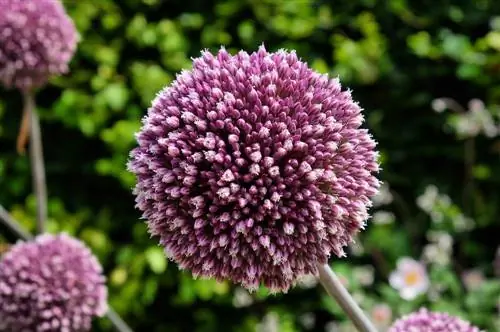- Author admin [email protected].
- Public 2023-12-16 16:46.
- Last modified 2025-01-23 11:22.
Whoever knows it, loves it - the coneflower, also called Echinacea. With its umbrella-shaped flowers, it provides colorful accents in the garden in late summer. But not only solo, but also in combination with other flowering friends, it makes hearts beat faster.

Which plants can I combine the coneflower with?
You can combine the coneflower harmoniously with perennials such as phlox, verbena, Indian nettle or steppe sage. Consider similar location requirements, bloom times, and complementary colors to create an appealing garden composition.
What factors should you consider when combining sun hats?
To enjoy the combination of the sun hat, you should take the following factors into account:
- Flower color: white, orange, red or pink, rarely yellow
- Flowering time: July to September
- Location requirements: sunny, permeable and nutrient-rich soil
- Growth height: 60 to 100 cm
You can combine the coneflower attractively with perennials that bloom in the same color, but you can also really bring it to life with a contrast. It is recommended to plant it together with plants that bloom at a similar time.
Since the coneflower feels most comfortable in a full sun spot in a permeable and nutrient-rich soil, its companion plants should also have similar requirements. Otherwise there could be visible disharmonies in the interaction.
Depending on the variety, the coneflower should either be in the foreground or in the middle to the background. If it is in the background, only ground cover or upholstery perennials should be in front of it so as not to let it disappear visually.
Combine coneflowers in the bed or in the pot
Numerous flowering perennials, which present their splendor in late summer, match the coneflower. You can contrast purple coneflowers with white, yellow or blue flowering plants. If, on the other hand, you are looking for a calm and soft overall picture, combine the coneflower with perennials that bloom in the same color. Grasses blend in perfectly in the background.
The following plants, among others, harmonize optimally with the coneflower:
- Phlox
- Vervain
- Grasses such as Miscanthus, Pipe Grass, Riding Grass, Pennisetum Grass
- Indian nettle
- Sun Bride
- larkspur
- Steppe Sage
Combine echinacea with Indian nettle
A combination of purple coneflower and purple Indian nettle like the 'Vintage Wine' variety looks balanced and peaceful. Both are prairie plants that prefer sunny locations on nutrient-poor soils.
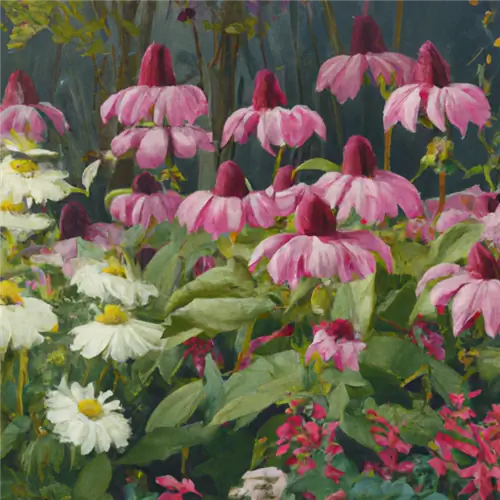
Combine coneflowers with miscanthus
The interaction between the coneflower and the miscanthus looks completely harmonious. While the miscanthus appears rather subtle in its color but impressive in its size, the coneflower provides a splash of color with its flowers. However, keep in mind that the miscanthus reaches a considerable size and should therefore be in the background of the coneflower.
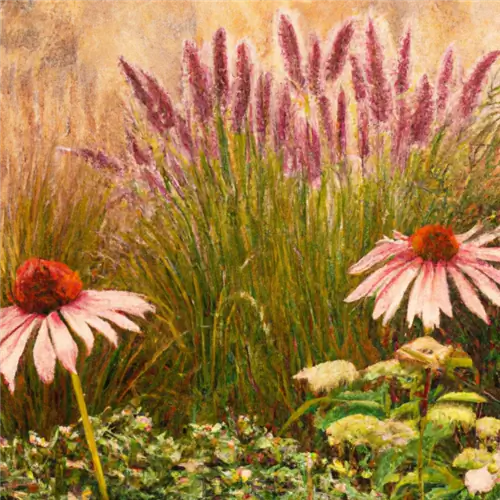
Combine coneflowers with phlox
Late-flowering phlox go impressively with coneflowers. Their different inflorescences and flower shapes ensure a contrasting play, for example in the pot. The bucket should be at least 30 cm deep (€18.00 on Amazon) and filled with slightly sandy soil. If it is then placed in a full sun spot, the yellow, white or purple phlox will literally shine in conjunction with the coneflower.
Combine coneflowers as a bouquet in the vase
The sun hat is perfect for colorful, summery, fresh, but also elegant bouquets of flowers. Combine white coneflowers with white hydrangeas and purple globe thistles and you will get a truly lovely bouquet. Other summer flowers and various grasses are also suitable for enriching a bouquet with coneflowers.
- hydrangeas
- Globe Thistles
- Yarrow
- Phlox
- Gladiolus
- Pennisetum grass

